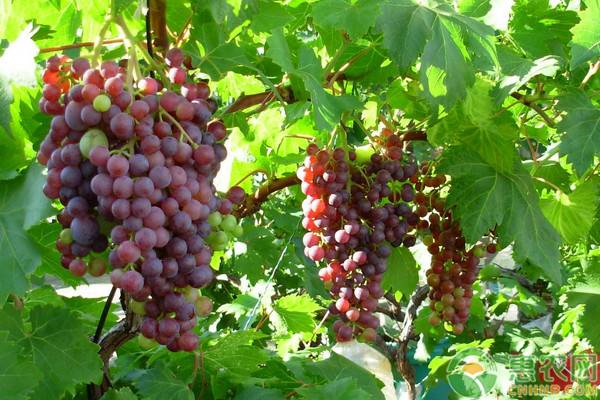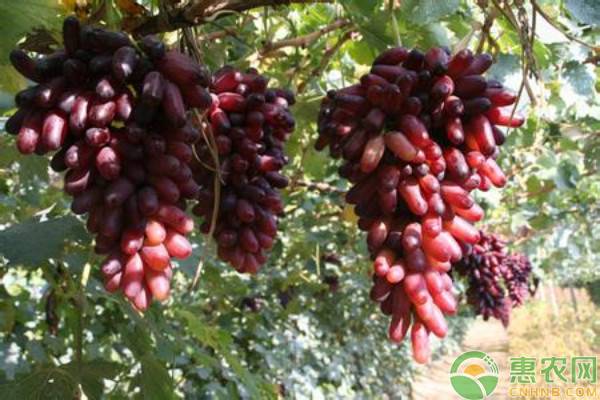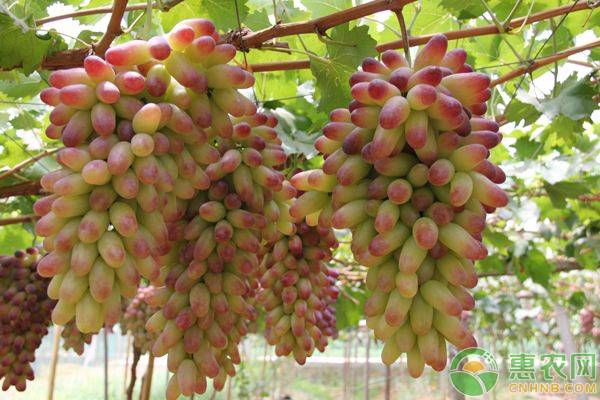Since the grapes have no post-ripening process, the grapes used for storage should be harvested after the fruits are fully mature, and the maturity is not enough to be stored. Today, Hui Nongwang Xiaobian and everyone learn the fresh-keeping technology of fresh grapes.

1. Pre-harvest control and harvesting methods. 1) Fresh grape for storage should not be watered for 10 days before harvesting. In case of large water, it is necessary to delay the harvesting time to prevent serious fruit cracking. 2) During the growth period, it is not possible to spray a ripening agent, a redening agent, etc. to accelerate the ripening and aging of the fruit, and prevent the occurrence of threshing during storage. 3) Spray the fungicide once a week before harvesting to eliminate fungal pathogens. 4) Choose windless weather when harvesting, avoid noon in the morning and harvest at noon under the scorching sun. 5) Keep the fruit noodles from rubbing off, and remove the small fruits, pests and fruits, and broken fruits.
2, packaging. Under the premise of keeping the grapes from deforming, squeezing or damaging, try to make the packaging beautiful, and pay attention to the hygiene of the fruit to ensure that the Fresh Fruit is free of pollution and water.
3. Storage conditions. 1) Two to three days before storage, the storage (room) should be fully and comprehensively disinfected twice. Firstly use a formalin solution to prepare a 1% solution of the active ingredient (formaldehyde), or use 40% fresh lime water to completely disinfect the entire storage; then use 10-20 g / cubic meter of sulfur powder Fumigation (the staff is best to bring a gas mask and evacuate in time), after 8 to 10 hours. 2) The temperature of fresh fruit during storage should be strictly controlled at -1 to 2 °C, and the relative humidity of air should be controlled at 87% to 95%. Low temperature can reduce the respiration intensity of the fruit, but should not be too low to prevent freezing damage. The humidity of the air is too low, which is not conducive to preservation. If it is too high, the fruit surface is easy to form water drops.

4. Usage and dosage of antiseptic preservative: When the storage temperature is 0~1°C, the conidia of various pathogens can germinate, and the hyphae can grow, so it is easy to cause fungal diseases such as gray mold and Alternaria rot. Occurs, so it is necessary to use antiseptic preservatives to sterilize and keep fresh.
(1) SO2. It can inhibit the activity of microorganisms and strong oxidases, prevent grape spoilage and discoloration, and inhibit and kill the fungal diseases such as gray mold, Alternaria, Penicillium, and Mycoplasma, and inhibit fruit and spikes. Breathing intensity and ethylene production.
The active ingredient of the sulfur powder combustion is SO2. After the fresh fruit is put into the mash, it is ignited with 4 to 5 g/m3 plus a small amount of combustion-supporting product, sterilized under closed conditions for 40 to 50 minutes, and then fumigated once every 20 days. Most fresh-keeping tablets can produce SO2 (such as SM, SPM preservative, CT preservative, etc.). Generally, 1-2 tablets per kilogram of grapes are placed. For example, the CT tablets of Jingyou grape are placed at 5 tablets per 3 kilograms. Under the temperature of 0-1 °C and the relative humidity of 90% to 92%, the fruit rate in storage in June is 98. 5%.
Note that the amount of SO2 should not be excessive. Excessive amounts can cause discoloration, whitening, sagging, browning around the pedicle, and blackening of the skin. Therefore, it should be carried out with a minimum amount of SO2.
(2) Calcium peroxide preservation tablets. Ethylene accelerates the aging rate of the fruit, so the accumulation of ethylene is controlled during storage. Calcium peroxide reacts with water to form ethylene glycol and hydrated lime, which can absorb the ethylene released from the fruit, thereby prolonging the storage time. The dosage is 1 gram of fresh-keeping tablets with 2 kg of grapes.
In addition, potassium permanganate solution, diatomaceous earth and vermiculite have good effects on the absorption of ethylene.

(3) sec-butylamine (C4H4NH2, also known as Z-AB). It is a colorless, volatile and ammonia-staining liquid preservative. It is most suitable for grape varieties sensitive to SO2 fumigation. The amount of grapes per 1 kg is 1 gram. Because it is more volatile, the same dose of medication should be added after 2 months.
Sec-butylamine is a flammable chemical. Keep it away from fire. When it is applied, put it in a vial with a cotton ball (note the bottle cap).
After reading the above content, how do you learn how to keep fresh grapes? In the course of operation, the amount of antiseptic and preservatives should not be mistaken.
For the wonderful pictures and hot comments about the fresh-keeping grape fresh-keeping technology, you may be interested in the following recommended contents of Hui Nong. Welcome to read.
Snacks usually refer to the food eaten outside the time point of three meals a day. Under normal circumstances, in people's life, except that three meals a day are called dinner food, the rest are called snacks. Canned fruit is a healthy snack. AGOLYN wholesale all kinds of canned fruit, such as canned yellow peach, canned orange, etc
Snacks,Canned Lychee,Canned Peaches,Canned Fruit
Xi'an Gawen Biotechnology Co., Ltd , https://www.seoagolyn.com